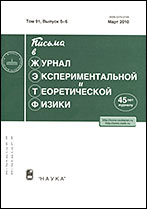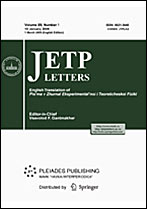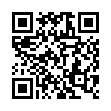|
This article is cited in 2 scientific papers (total in 2 papers)
FIELDS, PARTICLES, AND NUCLEI
Gluon anomaly and the violation of the Zweig rule
A. A. Osipov
Joint Institute for Nuclear Research, Dubna, Moscow region, 141980 Russia
Abstract:
It is well known that the gluon anomaly is responsible for the mass of the $U(1)$ Goldstone boson. It is also manifested in the properties of pseudo-Goldstone states: the gluon anomaly in the next order of the $1/N_c$ expansion induces interactions violating the Zweig rule. A necessary condition for this is the explicit breaking of the chiral symmetry by the masses of light quarks. One of the physical consequences is that the $\eta-\eta'$ mixing does not affect the $\eta \to 3\pi $ amplitude. Another consequence is the suppression of the first $1/N_c$ correction to the $\eta\to\eta'$ mixing angle. The mechanism of such suppression is discussed in detail. The conclusions are based on the $1/N_c$ expansion and the effective meson Lagrangian of the Nambu–Jona-Lasinio model and are compared with the results of the $1/N_c$ chiral perturbation theory.
Received: 21.03.2023
Revised: 05.05.2023
Accepted: 05.05.2023
Citation:
A. A. Osipov, “Gluon anomaly and the violation of the Zweig rule”, Pis'ma v Zh. Èksper. Teoret. Fiz., 117:12 (2023), 894–900; JETP Letters, 117:12 (2023), 898–904
Linking options:
https://www.mathnet.ru/eng/jetpl6966 https://www.mathnet.ru/eng/jetpl/v117/i12/p894
|


| Statistics & downloads: |
| Abstract page: | 56 | | References: | 27 | | First page: | 10 |
|





 Contact us:
Contact us: Terms of Use
Terms of Use
 Registration to the website
Registration to the website Logotypes
Logotypes








 Citation in format
Citation in format 
